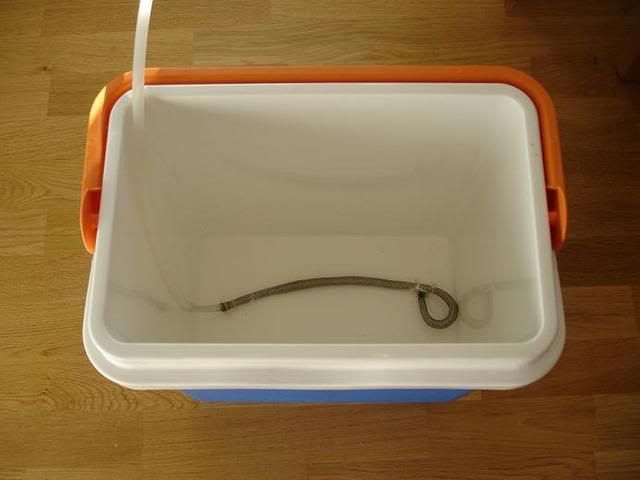Ok, I have to brew either today or tomorrow. Reason being, I am bottling today, and this will free up a fermenter. Being in Munich at the moment, I have limited myself to brewing beer styles that originate outside of Germany. (This is due to the fact that German beer is obviously so cheap and plentiful here).
I am really at the mercy of the weather, for I have no means of fermentation temperature control. So either I can
- Ferment in the apartment at 18 - 19C
- Ferment in the basement at 15.5 - 18C
On the last batch, I started in the basement, and then moved it into the apartment.
It is sunny today, so I must restrict my brewing to near nightfall, so I can cool the wort outside (colder) and the sun will not be out (hop skunking).
The question is, what should I brew? Given my ingredients (Cent, Simcoe, EKG, Magnum hops) (Pilsner, Caramunich II, CaraPils grains) (US-56 or S-04). I think I will make a variation of the last one, with lower alcohol, mashed at a higher temp, Simcoe instead of EKG, and "maybe" S-04.
What ya think? BTW, this will be EXTREMELY late hopped, with all of the hops going in at 10 minutes. I will still get my IBUs, there is just a larger quantity in there to attain it under such a short period of time.
IPA in Muenchen 2
10-A American Pale Ale

Size: 15.67 L
Efficiency: 73.5%
Attenuation: 76.0%
Calories: 186.14 per 12.0 fl oz
Original Gravity: 1.056 (1.045 - 1.060)
===================#============
Terminal Gravity: 1.013 (1.010 - 1.015)
==================#=============
Color: 11.2 (5.0 - 14.0)
==================#=============
Alcohol: 5.58% (4.5% - 6.0%)
===================#============
Bitterness: 44.81 (30.0 - 45.0)
=======================#========
Ingredients:
7.89 lbs Pilsner (2 Row) Ger
0.52 lbs Cara-Pils/Dextrine
0.66 lbs Caramunich® TYPE II
1.65 oz Simcoe (12.3%) - added during boil, boiled 10.0 min
0.47 oz Centennial (9.6%) - added during boil, boiled 10 min
1.41 oz Centennial (9.6%) - added dry to primary fermenter
1.0 ea Whirlfloc Tablets (Irish moss) - added during boil, boiled 10.0 min
1.0 ea Fermentis US-56 Safale US-56
Schedule:
00:03:00 Mash In - Liquor: 9.44 L; Strike: 167.0 °F
01:03:00 Rest - Rest: 60.0 min
01:04:00 Infusion - Water: 3.13 L; Temperature: 212 °F
01:04:00 Sparging - Sparge: 0.0 L sparge @ 168.0 °F, 9.0 L collected, 0.0 min; Sparge #2: 9.0 L sparge @ 168.0 °F, 9.0 L collected, 0.0 min; Total Runoff: 18.0 L
Results generated by BeerTools Pro 1.0.15






